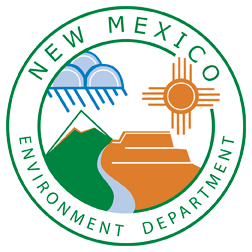When is a water system required to replace lead service lines
Community and non-transient, non-community public water systems with one or more lead service lines or galvanized service lines in need of replacement are required to have a lead service replacement plan. Systems are only required to implement the replacement plans if there is an exceedance of either the 10 ppb trigger level or the 15 ppb action level.
Plans must be submitted to the state no later than October 16, 2024.
Public water systems impacted by the LCRR should proactively consider available funding options to remove lead service lines. Bipartisan Infrastructure Law funding may be available through the Drinking Water State Revolving Loan Fund. Please visit the NMED Infrastructure Projects and Funding page for more information on funding opportunities.
Service Line Replacement after exceeding the trigger level (10 ppb) but below the lead action level (15 ppb)
Community water systems that serve more than 10,000 population and are above the trigger level but below the action level must conduct goal-based lead service line replacements. The goal-based replacement rate must be approved by the state.
Service Line Replacement after exceeding the action level (15 ppb)
Community water systems that serve more than 10,000 persons and are above the action level must conduct mandatory lead service line replacements at a rate not less than 3%. The rate must be approved by the state.
Small System Flexibility
Non-transient and Community water systems that serving less than 10,000 population for which the state has approved or designated lead service line replacement as an option following an exceedance must follow all steps to conduct the replacement and provide customer notification.
What must be included in the replacement plan?
Lead service line replacement plans must contain enough detail to address how the water system will meet Lead and Copper Rule Revision requirements. Those steps are included in the following list.
| 1. | A strategy for determining the composition of lead status unknown service lines in its inventory. |
| 2. | A procedure for conducting full lead service line replacement |
| 3. | A communication strategy for informing customers before a full or partial lead service line replacement |
| 4. | For systems that serve more than 10,000 persons, a lead service line replacement goal rate recommended by the system in the event of a lead trigger level exceedance |
| 5. | A procedure for customers to flush service lines and premise plumbing of particulate lead after replacement of a service line |
| 6. | A lead service line replacement prioritization strategy based on factors including but not limited to the targeting of known lead service lines, lead service line replacement for disadvantaged consumers and populations most sensitive to the effects of lead |
| 7. | A funding strategy for conducting full lead service line replacements which considers ways to accommodate customers that are unable to pay to replace the portion they own. Such as plans to apply for lead service line replacement funding, property assessments, ordinances, etc. |
Procedures for replacing lead goosenecks, pigtails, or connectors
| 1. | The water system must replace any lead gooseneck, pigtail, or connector it owns when encountered during planned or unplanned water system infrastructure work. |
| 2. | The water system must offer to replace a customer-owned lead gooseneck, pigtail, or connector; however, the water system is not required to bear the cost of replacement of the customer-owned parts. |
| 3. | The water system is not required to replace a customer-owned lead gooseneck, pigtail, or connector if the customer objects to its replacement. |
| 4. | The replacement of a lead gooseneck, pigtail, or connector does not count for the purposes of meeting the requirements for goal-based or mandatory lead service line replacements. |
| 5. | Upon replacement of any gooseneck, pigtail, or connector that is attached to a lead service line, the water system must follow risk mitigation procedures specified in § 141.85(f)(2). |
Return to Lead and Copper Rule Revision

